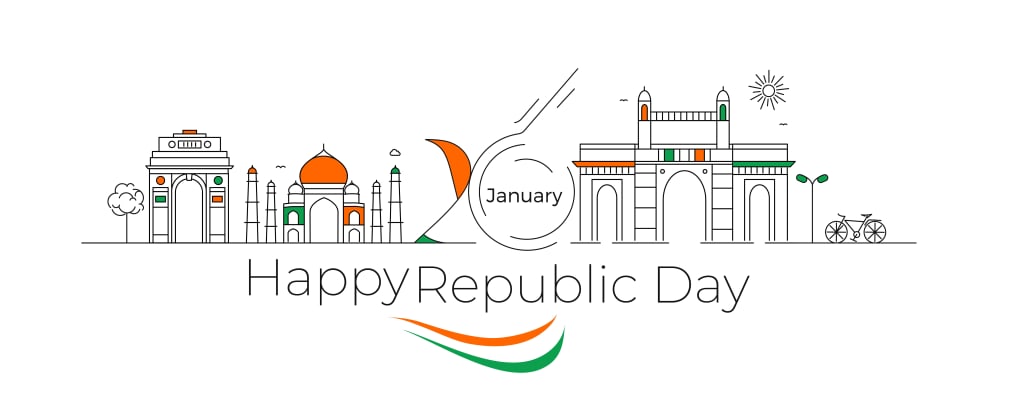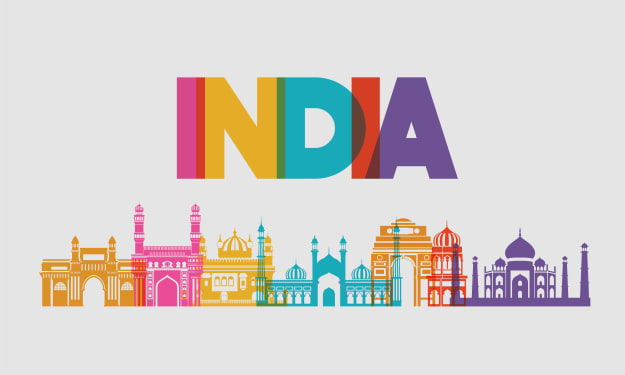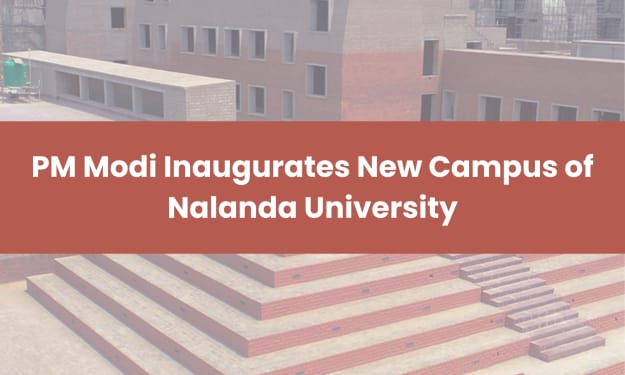
India celebrates Republic Day on January 26th every year to commemorate the adoption of the Indian Constitution in 1950. The Constitution of India was adopted by the Constituent Assembly on 26th January, 1950 and came into effect on the same day in 1950, making India a republic. This day is considered as one of the most important national holidays in India, as it marks the transition of India from a British colony to an independent republic. The main Republic Day celebration is held in the national capital, New Delhi, where a grand parade is held at Rajpath, featuring a display of India's cultural and military heritage.
Different between independence day and republic day:
Independence Day and Republic Day are two important national holidays in India that commemorate two significant events in the country's history.
Independence Day is celebrated on August 15th every year to commemorate India's independence from British rule on August 15th, 1947. On this day, India became a free and sovereign nation after almost 200 years of British colonial rule. Independence Day is marked by the hoisting of the national flag, patriotic songs, speeches, and cultural programs.
On the other hand, Republic Day is celebrated on January 26th every year to commemorate the adoption of the Indian Constitution in 1950. The Constitution of India was adopted by the Constituent Assembly on January 26th, 1950, and it came into effect on the same day in 1950, making India a republic. This day is considered as one of the most important national holidays in India, as it marks the transition of India from a British colony to an independent republic. The main Republic Day celebration is held in the national capital, New Delhi, where a grand parade is held at Rajpath, featuring a display of India's cultural and military heritage.
In short, Independence Day marks India's freedom from British colonial rule, while Republic Day marks India's transition to a republic.
Important Government Schemes 2023
1. Pradhan Mantri Garib Kalyan Anna Yojana
Pradhan Mantri Garib Kalyan Anna Yojana (PMGKAY) is a food security scheme launched by the Government of India in response to the economic impact of the COVID-19 pandemic. The scheme aims to provide free food grains to the poor and vulnerable sections of society, who have been affected by the pandemic-induced lockdowns and economic disruption.
Under the scheme, the government provides 5 kilograms of free wheat or rice and 1 kilogram of free chana (chickpeas) per person per month to eligible beneficiaries for a period of three months. The scheme is targeted at poor and vulnerable households, including ration card holders, senior citizens, widows, and divyang (persons with disabilities).
The scheme was announced by the Prime Minister of India in March 2020, as a part of the government's efforts to mitigate the impact of the pandemic on the poor and vulnerable sections of society. The government also announced an increase in the coverage of the National Food Security Act (NFSA) and the expansion of the Pradhan Mantri Fasal Bima Yojana (PMFBY) to provide additional support to farmers.
The scheme was implemented for three months and it was later extended for two more months (till November 2020) in order to provide support to the poor people till the situation of COVID-19 comes under control.
2. Pradhan Mantri Awas Yojana (PMAY)
Pradhan Mantri Awas Yojana (PMAY) is a housing scheme launched by the Government of India in 2015 with the goal of providing affordable housing to all citizens by the year 2022. The scheme aims to provide housing to urban and rural poor, including low-income groups, economically weaker sections and slum dwellers.
The scheme is divided into two components:
Pradhan Mantri Awas Yojana-Urban (PMAY-U): The objective of this component is to provide affordable housing in urban areas to the economically weaker sections (EWS), lower income groups (LIG), and Middle Income Groups (MIG) through credit-linked subsidy and affordable housing in partnership.
Pradhan Mantri Awas Yojana-Gramin (PMAY-G): The objective of this component is to provide a pucca house with basic amenities to all houseless and households living in kutcha and dilapidated houses in rural areas.
The scheme includes a range of measures including the construction of new houses, upgrading of existing houses and in-situ rehabilitation of slums. The scheme also provides interest subsidies on home loans to eligible beneficiaries, and provides financial assistance for the construction of toilets and drinking water facilities.
The scheme is being implemented by the Ministry of Housing and Urban Affairs (MoHUA) with the active involvement of the State Governments/UTs and the Urban Local Bodies (ULBs). The scheme is implemented in partnership with the private sector, and beneficiaries are selected through a transparent process of online application and verification.
3. Meri Policy Mere Hath
"Meri Policy Mere Hath" is a scheme launched by the Government of India to provide insurance policies to the citizens of India. The scheme aims to increase the penetration of insurance in India and provide financial protection to citizens against various risks.
Under the scheme, citizens can purchase insurance policies through the government's digital platform, and the premium for these policies is to be paid by the government. The scheme aims to cover various types of insurance such as health, life, and accidental insurance.
The scheme is targeted at marginalized and low-income groups, and is intended to increase the overall insurance penetration in India, which is currently low compared to other countries. The scheme also aims to promote financial inclusion and provide economic security to citizens.
It's worth mentioning that the scheme that I described is not an official government scheme and I couldn't find any official information regarding this matter. It's always recommended to check with the official government website or authorized agencies to get the recent and accurate information about the schemes and programs.
Conclusion
India is a country located in South Asia, known for its rich cultural heritage, diverse history, and vibrant society. India is the world's second-most populous country, with a population of over 1.3 billion people. It is also one of the world's fastest-growing major economies and a nuclear power. India is known for its diverse culture, which is reflected in its art, music, literature, and cuisine. The country is home to a wide variety of religions, including Hinduism, Islam, Buddhism, Jainism, and Sikhism, and many languages are spoken in India. India is also known for its rich history, including the Indus Valley Civilization, the Mughal Empire, and the British Raj. India gained independence from British rule in 1947 and became a republic in 1950. Today, India is a federal parliamentary democratic republic, with a President as the head of state and a Prime Minister as the head of government.
About the Creator
Nazeer Mohammed
Story, as it turns out, was crucial to our evolution -- more so than opposable thumbs. Opposable thumbs let us hang on; story told us what to hang on to.
Stay together always.........
Enjoyed the story? Support the Creator.
Subscribe for free to receive all their stories in your feed. You could also pledge your support or give them a one-off tip, letting them know you appreciate their work.






Comments
There are no comments for this story
Be the first to respond and start the conversation.